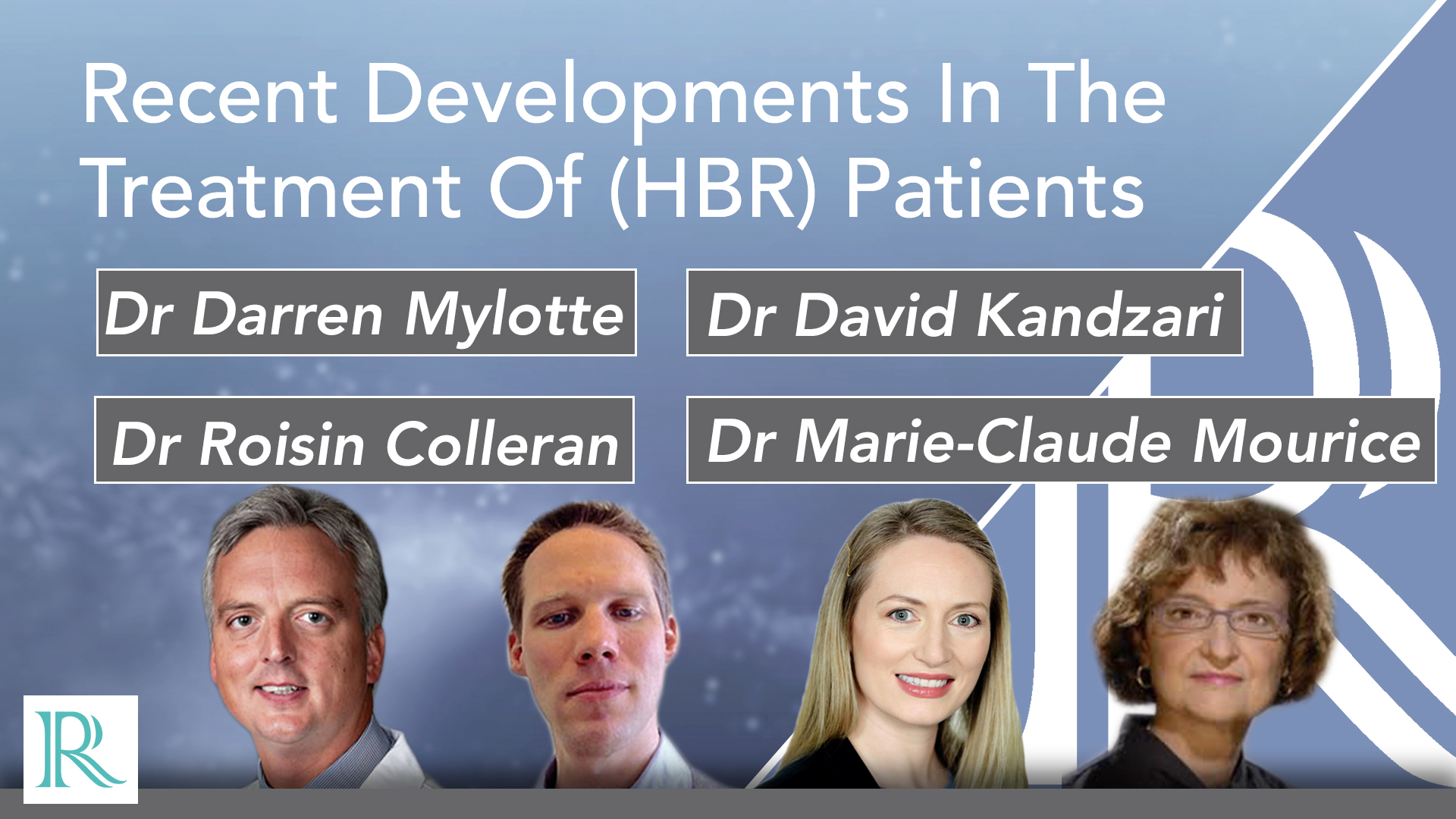Recent Developments In The Treatment Of (HBR) Patients
Published: 23 January 2021
-
Views:
 61321
61321
-
Likes:
 7
7
-
Views:
 61321
61321
-
Likes:
 7
7
-
 8m 24sPart 1 Ischemic and Bleeding Outcomes in Patients With vs. Without Atrial Fibrillation (AF) – insights from the Onyx ONE program Darren Mylotte, David Kandzari
8m 24sPart 1 Ischemic and Bleeding Outcomes in Patients With vs. Without Atrial Fibrillation (AF) – insights from the Onyx ONE program Darren Mylotte, David Kandzari
-
 10m 11sPart 2 Chapter 2: Complex PCI with 1-month DAPT in HBR patients - insights from the Onyx ONE program Darren Mylotte, David Kandzari
10m 11sPart 2 Chapter 2: Complex PCI with 1-month DAPT in HBR patients - insights from the Onyx ONE program Darren Mylotte, David Kandzari
Overview
Learn more about the most recent developments in the treatment of (HBR) patients with coronary artery disease through videos, interviews and panel discussions with renowned faculty from highly ranked institutions.

Key Learning Objectives
- To emphasize the importance of defining high bleeding risk in patients undergoing PCI
- To increase identification of high bleeding risk patients and learn how to apply this in your clinical practice
- To highlight the Onyx One Clinical Program, including sub-analysis and the relevance for your daily practice
More from this programme
Part 1
Ischemic and Bleeding Outcomes in Patients With vs. Without Atrial Fibrillation (AF) – insights from the Onyx ONE program
Part 2
Complex PCI with 1-month DAPT in HBR patients - insights from the Onyx ONE program
Part 3
High Bleeding Risk Patients: Identifying the ‘forgotten’ population – Do we have the tools?
Faculty Biographies

Marie-Claude Morice
Dr Marie-claude Morice has been head of the Insitiut Cardiovasculaire Paris Sud, since 1995. He is a guest speaker at all major international meeting of the European Society of Cardiology (ESC) the American Heart Association (AHA) and the American College of Cardiology (ACC). Dr Morice is an expert with the Regional Hospital Agency (ARH) and is Co-Director of the Paris course on revascularisation. He is a corresponding member of the Argentine Society of Cardiology and was elected Honorary Professor of the Universidad Del Salvador, Buenos Aires, Argentina in 2004. Dr Morice gained an MD in 1973 and a degree in cardiology in 1975.






